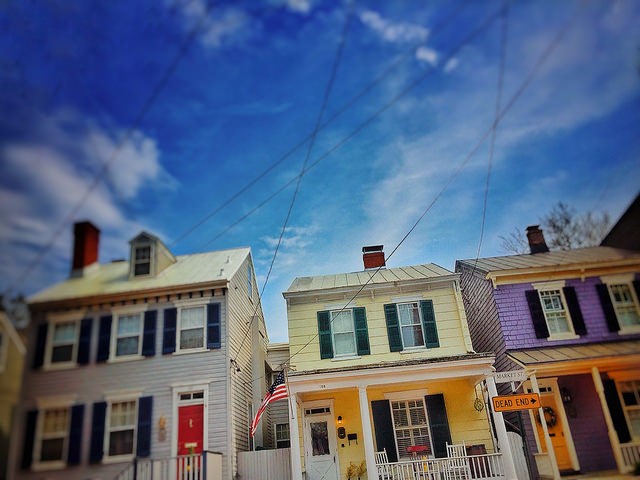Home buyers this year have faced higher prices, more competition, and rising mortgage rates. In short, it’s been a challenging year. But that’s not to say it isn’t a good time to buy a house. There are many reasons to be optimistic about homeownership, in fact – and a few that put current conditions in perspective. Take mortgage rates, for example. According to Freddie Mac, the long term average is 8.16 percent, which means today’s rates are still low historically. Also, home equity is increasing. In fact, it’s up 13% year-over-year. And rising home equity means today’s homeowners are seeing their investment grow. There is also evidence that market conditions may begin to improve. For one, new home construction has been making gains and that means more homes for buyers to choose from. It also means buyers should begin to see prices moderate and competition wane, as more new homes are built to meet today’s high level of buyer demand. In short, there are a lot of good reasons to be optimistic about buying a house this year, despite market challenges. More here.
Where Homeowners Have The Most Extra Cash
Your financial health isn’t really about how much money you make. It’s more about how much you have left over once you’ve paid all your bills. After all, if you make $1 million a month but also spend $1 million, you’re still struggling financially. And no one likes worrying about money. For that reason, a recent analysis took a look at the 50 biggest cities in the country and – based on household income, home prices, and cost of living – tried to determine where homeowners were able to live most comfortably. Fortunately, the results show that in 44 of the 50 cities included the average homeowner had money leftover at the end of the month. But surprisingly, the hardest places for Americans to put away a little extra cash weren’t necessarily the most expensive places to live. In fact, cities in the Midwest and South were among the toughest, rather than pricier areas on the coasts. For example, Detroit, Memphis, New Orleans, and Cleveland were four of the six cities where residents showed a negative balance. Philadelphia also made the list. The number one spot, however, was Miami, where a high cost of living and a low median income make it a tough place to save. More here.
Log And Timber Homes Increasing In Popularity
If you were asked to name a hot home design trend, you probably wouldn’t guess log homes. And yet, new data from the National Association of Home Builders shows last year’s sales of log and timber homes were 56% higher than in 2012. That’s a big jump. So what’s behind the increase? Well, for one thing, today’s log and timber homes don’t resemble what might come to mind when thinking of an old-fashioned “log cabin.” According to the NAHB, “Revenues from log and timber frame homes have risen at a faster pace than units sold over the past six years as floorplans for the homes have expanded and offerings more extravagant.” In other words, today’s log homes are bigger and more luxurious than in the past. In fact, the average log home is 2,031 square feet. Still, the popularity of the homes is impressive when considering the fact that sales last year were only 7.8 percent below the number sold in 2006, while the rest of the single-family construction industry is down 42 percent. In short, log homes have been around forever and, based on their current popularity, they aren’t going anywhere any time soon. More here.
A Quick List Of Things To Do Before The Move
Why Are Younger Americans Buying Fewer Homes?
In recent years, there’s been a lot of discussion about millennial home buying preferences. Mostly, this is due to the fact that first-time home buyers have historically made up about 40 percent of the home sales in any given year. And, because they account for a large number of the homes sold each year, any fluctuation in those numbers is notable. That’s why Freddie Mac recently took a look at why the homeownership rate among young adults has dropped 8 percent since hitting its peak in 2004. As you might imagine, there are a variety of reasons for this. Among them, affordability, not surprisingly, ranks highest. Concern about being able to afford homeownership is always an issue for younger buyers. But there are many other factors that have played a role in suppressing buyer demand among first-time buyers. Some of the other common reasons named included lower marriage and fertility rates, student-loan debt, borrowing constraints, and a preference for urban living, which tends to be more expensive. In short, young Americans – in addition to affordability challenges – have more debt and are starting families later in life. But, though lifestyle and demographic changes have influenced buying activity, Freddie Mac predicts homeownership rates will rebound, if the economy and wages continue to improve. More here.
The Summer Features Home Buyers Want Most

A Common Mistake Home Buyers Should Avoid
Home Buyer Must Haves Mean Compromise
Searching for a home to buy can be frustrating. Mostly because it’s not always easy to find a house in the right neighborhood with every one of the features you dreamed of. If you find the perfect kitchen, the house will have too few bedrooms. Or you’ll find a house with the right number of bedrooms and the kitchen will be too small. In other words, buying a house means compromise. And, in today’s market, buyers are having to make difficult choices. For example, a new analysis from the National Association of Realtors’ consumer website found that for 73 percent of recent buyers school district was an important factor in deciding which house to buy. But, among those buyers, nearly 80 percent said they had to give up other home features in order to find a house in their preferred district. Some of the features these buyers said they gave up included a garage, a large backyard, an updated kitchen, and an outdoor living area. In short, you might not get everything you want in one house. So prioritize your wish list and know what’s most important to you. More here.
Are Unequal Housing Markets Good For Buyers?
Income inequality is a hot topic these days. But what about housing market inequality? Well, a recent analysis looked at 50 of the largest metropolitan areas with an eye for which had the biggest city-wide disparity between high-end homes and the lowest-priced available homes. The results may surprise you. That’s because, the housing markets with the widest range between the high and low end of the market aren’t necessarily the markets that would immediately come to mind. In other words, cities like San Francisco – which features some of the country’s highest priced homes – were more equal than Midwestern cities where the cost of living is much lower. In fact, the number one most unequal housing market was Detroit, where the home values range from $32,000 to $431,000. Salt Lake City, on the other hand, was the most equal market, with median prices between $191,000 to $597,000. In this case, inequality might just be better for buyers. That’s because, the most unequal markets offer a wider range of prices for buyers to choose from, which means home buyers at all ends of the spectrum will have an easier time locating something that fits their budget. More here.
Remodeling Index Finds Home Repairs On The Rise
Maintenance is a big part of being a homeowner. Put simply, owning a home means having a never-ending to-do list and, depending on your level of know-how, some of it will require the help of a professional. These jobs can range from major renovations such as putting an addition on your house to basic upkeep and repairs like having ducts cleaned and fixing leaks. Essentially, you are your home’s temporary caretaker and how well you take care of it will affect not only how comfortable and enjoyable your home is to live in but also how much you can ask for it when you sell. These days, it seems Americans are increasingly interested in fixing up their homes. In fact, newly released data from the National Association of Home Builders shows home remodeling contractors are busy right now. So what kind of jobs are most in demand? Well, results show demand is highest for basic maintenance and repairs, while additions and alterations – both major and minor – saw slight declines during the second quarter. In short, Americans are tackling their to-do lists and fixing up their homes. This could be due to improved economic conditions and a stronger job market, though it may also be that current homeowners are tending to their homes in hopes of listing them someday soon. More here.

